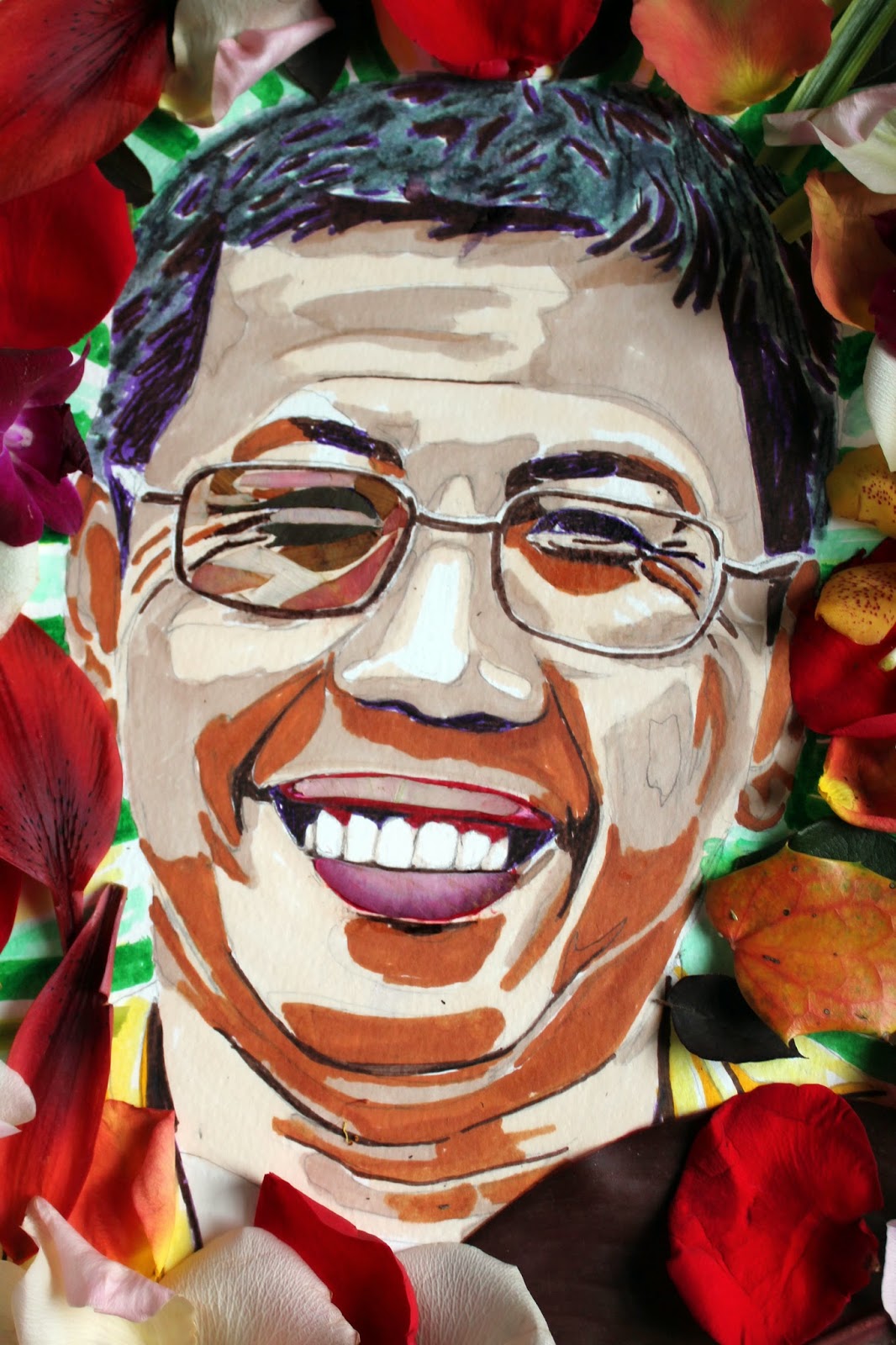 |
| Acrylic on canvas by Liz Peterson Original photograph © Survival International |
Ambrosio Vilhalva was a leader of one of the few remaining tribes of indigenous Guarani in Southern Brazil. Mr. Vilhalva was leading the charge among his people to take back the ancestral land that had been forcibly taken from them decades ago by powerful ranchers. During this massive displacement that took place around the mid-century, approximately fifty thousand Guarani were forced into cramped refugee settlements with no land and a loss of their entire livelihood. The loss of their homeland, which they refer to as "tekoha," has taken a huge toll on the population of Guarani - they are often forced to take low-paying jobs with the ranchers or farmers that have taken their land. The suicide rate among them is one of the highest in the world.
Though Mr. Vilhalva may not have identified as an environmentalist, his advocacy for the rights of the Guarani aligns with efforts to protect the lands they claim as home, and he was an outspoken critic of the clearing of the land for use as a sugarcane plantation. The forced removal of indigenous people from their ancestral lands closely corresponds with massive ecological abuse, as the lands are usually seized for use of their natural resources.
Vilhalva attempted to get government assistance in reclaiming the lands that had been taken from his tribe by ranchers in the 1950s, but a lethargic response led him to take matters into his own hands. In 2004, he led his people into a small plot of land on their stolen tekoha, where they squatted among the sugar cane crops and stayed in spite of constant threats and harassment.
In 2008, Vilhalva became an internationally known film star after the release of the Marco Bechis film "Birdwatchers," in which he played the main character. The film was a fictional account of the struggle between the Guarani and landowners that came after and it starred many members of his tribe. Vilhalva felt that the movie would help people understand their plight. After five years of activism, the Guarani were finally recognized as the rightful owners of the land by the Minister of Justice in 2009, though this designation did nothing to stop the ranchers from using the land and threatening the Guarani settlement.
In December of 2013, Valhalva was stabbed to death in his home. Police detained Vilhalva's father-in-law as the main suspect in his murder, though he has denied any involvement. Others in his community suspect that his death was the result of his activism, as he was receiving death threats from ranchers disputing the Guarani's right to the land.
Sources:
http://www.survivalinternational.org/news/9826
http://www.survivalinternational.org/news/9797
http://www.news.com.au/world/south-american-indian-activist-ambrosio-vilhalva-has-been-murdered/story-fndir2ev-1226774711288
Trailer for "Birdwatchers"






